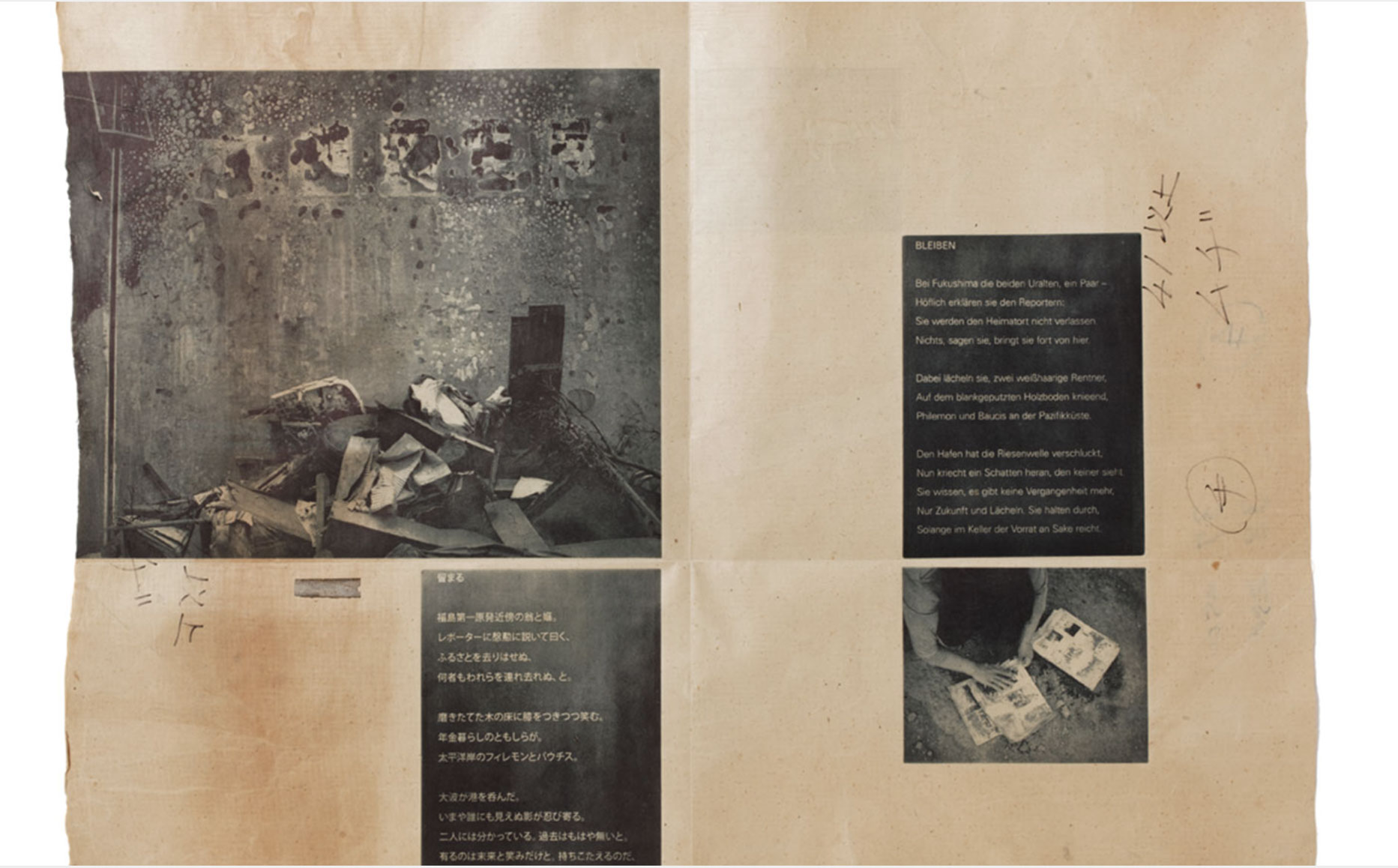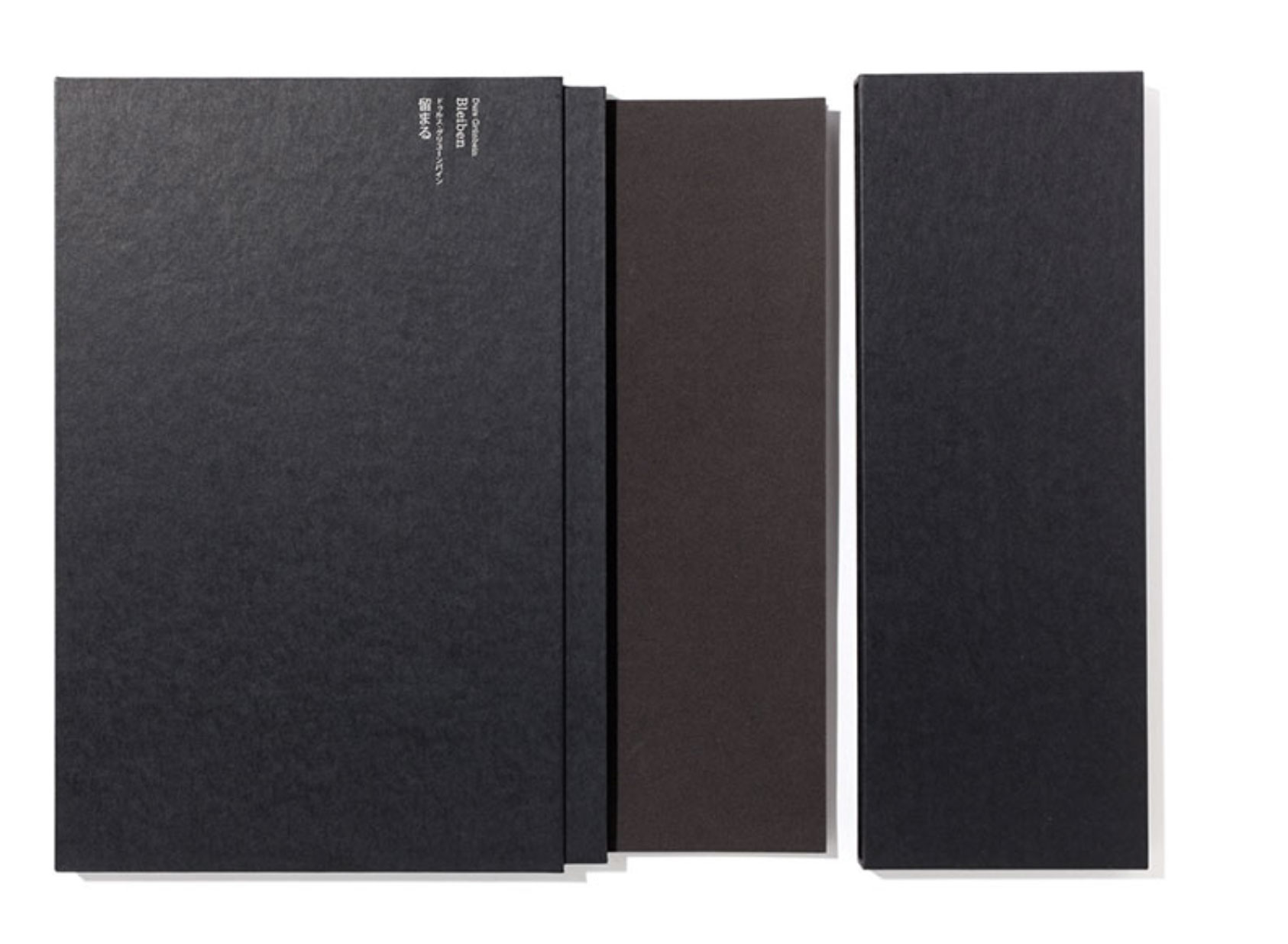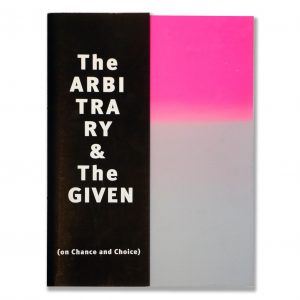Bleiben
Bleiben
Date
2011
Edition Size
33
Media
Digital print, Letterpress
Paper
Ganpi paper
Binding
Custom enclosure, Loose pages
Format
Artist Book
Dimensions
26.77 × 20.47 in
$ 1,800.00
Unavailable
View Collectors
Carleton College
Occidental College
Stanford University
University of Basel
Washington University in St. Louis
Wellesley College, Davis Museum and Cultural Center
On March 11, 2011, the North-Eastern part of Japan was struck by an earthquake with a 9.0 magnitude, followed by a tsunami that devastated extensive parts of the coast. The electricity of the nuclear power plant Fukushima-Dai-ichi broke down, and four reactor blocks got out of control. Afraid of radiation and the consecutive aftershocks, I went with my family to Fukuoka in Southern Japan on March 13. From there, we travelled via HongKong and Dresden to Düsseldorf, where we stayed for five weeks before returning to Tokyo.
While in Germany, I started working on an x-ray project, which I later finished in Tokyo. The German author Durs Grünbein, who is very familiar with Japan, wrote a poem reflecting the emotional state of many Japanese citizens.
The invisible radiation – so difficult to understand and whose consequences will appear only years or decades later – was one of the topics I was thinking about a lot while in Germany. At what point in time would it make sense to take our two little children back to Tokyo? To make the invisible tangible, I worked with x-rays to visualize Grünbein’s poem.
I cut the German text and its Japanese translation by Yuji Nawata from a thin magnetic foil. Mr. Ulrich Hennig, the director of the German x-ray museum, then took pictures of these two texts on a medical x-ray device, which later became the base for making the photogravure plates.
I paired the x-ray pictures with three photographs taken by the Swiss photographer Andreas Seibert in Tohoku. They show a photo album and a Japanese woman looking for her personal belongings in the village Rikuzentakata, which was destroyed by the tsunami. The biggest image shows a wall of a public building in Otsuchi, burnt and with remains of the tsunami in front. These three images are also printed as photogravures and thereby possess a level of abstraction that extends beyond documentation.
The five photogravures are printed on one sheet of old ganpi-paper which was originally used to wrap handmade paper. These wrapped stacks were marked with different notes; e.g. amount, name of the craftsman and other small notes. They also were stored for a long time and show signs of dirt or are yellowed at the corners. These indications of time and use are consistent with both the poem and Seibert’s photographs; it was mainly photo albums that the citizens of the destroyed villages were looking for, carefully kept rememberances of family, friends and fesivities which cannot be replaced, unlike most material things.
Onto another sheet of ganpi-paper I printed in letterpress a remark of Grünbein and the imprint; both sheets are kept in a jacket of dark grey cardboard and are stored in a black-blue pasted case. — Veronika Schäpers
Text by Durs Grünbein. Translated into Japanese by Yuji Nawata.
Letterpress print on ganpi paper.
3 photographs taken in Rikuzentakata and Otsuchi by Andreas Seibert.
Ulrich Hennig, Director of the German X-ray Museum in Remscheid, took the x-ray images.
Five photogravures printed by Lars Dahms in Hamburg on 70-year-old Japanese ganpi paper.
Colophon and remarks: Letterpress print on ganpi paper.
Case with embossed title by Bookbindery Mergemeier in Düsseldorf.
First edition of the German text and its Japanese translation.
–––––––
1 sheet, about 26.77 x 20.47 inches.
Edition of 28 copies using Arabic numerals and 5 copies using Roman numerals
–––––––
Tokyo, 2011
Durs Grünbein / Bleiben on vimeo







